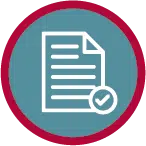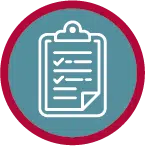- February 16, 2023
- Perspectives
How to Develop an ADA Transition Plan: Kimley-Horn’s Guide to Creating More Inclusive Communities

Brian Shamburger, PE, PTOE
Accessibility Specialist
Imagine a normal day where simply crossing the street isn’t possible because there’s no curb ramp at the end of the sidewalk, or paying your water bill isn’t possible because there are only steps to get into City Hall. Maybe you’re at an outdoor festival and need to use the restroom, but the event coordinator didn’t provide an accessible, portable facility. Perhaps your child with Autism is unable to participate in your town’s summer camp because it’s not inclusive of children of all abilities. These are everyday challenges for people with disabilities. Fortunately, municipalities can create more inclusive communities with a clear understanding of the requirements of the Americans with Disabilities Act (ADA).
The ADA is a civil-rights law that mandates equal opportunity for individuals with disabilities and guarantees that they have the same opportunities as everyone else to participate in mainstream American life: to enjoy employment opportunities; purchase goods and services; and participate in state and local government programs and services. Ongoing education and guidance are essential for municipalities’ and businesses’ compliance with the ADA. Helping people with both permanent and temporary disabilities access civic life is a fundamental goal of the ADA. To ensure that this goal is met, Title II of the ADA requires that state and local governments make all programs and services accessible to people with disabilities.
According to the 2017 Census, 12.6% (or approximately 40 million people) of the U.S. population over the age of 15 has a disability.
– 2018 American Community Survey 1-Year Estimates
What is Required in an ADA Self-Evaluation and Transition Plan?
The ADA is an all-inclusive law that requires a municipality (no matter the size) to review all aspects of its programs, services, and activities for compliance, often referred to as a Self-Evaluation and Transition Plan. The Self-Evaluation process requires a clear understanding of the ADA Title II regulations, specifically the program’s access test as applied to existing facilities. The requirements for a Transition Plan, as outlined in 28 C.F.R. section 35.150, only apply to public agencies with 50 or more employees.
When conducting the Self-Evaluation process, you’ll review each department that interacts with the community, all boards and commissions, facilities, curb ramps, intersections and sidewalks, and the municipality’s employment practices. An evaluation of all programs, services, and activities must be conducted and included in the Transition Plan.
Getting Started
Evaluating every program, service, and activity in your community can be a daunting task. You might not know where to begin or feel you don’t have the time and resources. While completing your Self-Evaluation and Transition Plan may seem overwhelming, you can approach the task by getting started and then gradually developing an action plan to evaluate everything. To help you get the ball rolling, we’ve outlined the following eight-step process for achieving ADA compliance.

1. Designate an ADA Coordinator
Designate at least one person to serve as the ADA Coordinator. Choose someone committed to being a consistent presence at meetings. Ensure their experience and education will allow for the effective coordination of your municipality’s efforts to comply and carry out responsibilities under the ADA and that they have the authority to create change within the municipality.

2. Provide Public Notice About the ADA Requirements
Municipalities are required to make sure the public knows the rights that are afforded to them under the ADA. You must communicate and get feedback from people with disabilities while developing the Transition Plan.

3. Establish a Grievance Procedure
A grievance procedure outlines how and where a complaint can be filed with your municipality. It also establishes the timeframes in which you will respond, and how the complainant can appeal if they disagree with the outcome. There are numerous benefits of having a grievance procedure in place: promoting consistency; having documentation (in case of litigation); and providing complainants a formal process.

4. Document Your Current State of Compliance
There’s no doubt that every municipality has improved accessibility over the last 30 years—document it. What you are responsible for? What evaluations have been completed? How complete are they? What still needs to be evaluated?

5. Develop Internal Design Standards, Specifications, and Details
The last thing you want to do is design and construct something that’s out of compliance. Therefore, it’s important to establish and review your guidance and standards documents for consistency with current applicable standards. It may even be necessary to develop guidance documents to avoid common construction issues.

6. Develop a Self-Evaluation and Transition Plan
This is where the real work begins. Municipalities must evaluate all programs, services, and activities for compliance with the ADA. This includes everything from after-school programs offered by the Parks and Recreation Department to sidewalks and transit stops. When you identify barriers, you’re required to develop a plan to fix them, which includes cost, schedule, and the responsible person or department (i.e., your Transition Plan).

7. Approve a Schedule and Budget to Implement the Transition Plan
Real progress can be made when a municipality makes financial commitments to improving access. Include barrier removal projects as part of your annual budgets, either as stand-alone projects or as part of regularly occurring programs (e.g., street resurfacing projects). This should continue until all barriers are eliminated, which will vary based on the size and resources of your municipality.

8. Monitor Progress
Once you start working on your Transition Plan, keep track of barrier removal projects. The Transition Plan is intended to be a living document, updated regularly to inform both staff and people with disabilities that progress is being made.
As we celebrate the ADA’s 30th anniversary, now is the time to conduct a Self-Evaluation and prioritize inclusivity and compliance. How does not having an updated and compliant ADA Transition Plan impact people in your community? Kimley-Horn is here to help bridge the gap between the intent of the law and the practices of our clients so that everyone may have equal opportunities to enjoy civic life.
About the Author

Brian Shamburger, PE, PTOE
Brian brings more than 28 years of experience in transportation engineering and accessible pedestrian facility design. For more than 12 years, he has become an expert in the field of accessibility, helping numerous municipalities and Title II agencies across the country perform Self-Evaluations and develop ADA Transition Plans. Each of the plans he has managed has also included extensive staff training on the technical aspects of ADA. Brian has also worked with numerous municipalities and state DOTs across the country to host roundtables on ADA Transition Plan requirements and is a recurring instructor at the National ADA Symposium.
